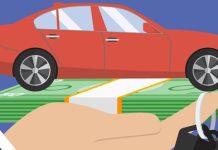Repossession of your car is not something anyone wishes for. However, failure to repay the car or auto loan due to unforeseen circumstances can lead to this becoming a reality. When this happens, and you wish to get your car back from repossession, there are a few steps that you can take to regain possession of the car. In this article we will examine what leads to a car getting repossessed and what it is that you can do to fix that.
Title Loan Repossession
The car title loan repossession refers to the act of the car loan lenders repossessing the car from the borrower due to the inability of the borrower to pay the loan installments. The way this process takes place can vary based on the state in which the borrower is situated and the loan has been granted because the laws for this are varied in different states.
However, that is not the only reason for which a car title can be repossessed. In some cases failure to carry out the specified insurance requirements can also lead to the repossession. This reason is usually very uncommon. It is also essential to note that depending upon circumstances such as whether you have a car loan, car lease, or car title loan, the rules for repossession can differ. They can further change if the borrower declares bankruptcy.
Depending upon individual circumstances, a lender can repossess the car even if one repayment is missed. Nevertheless, as per the general practice, usually a 30 days to 90 days period is granted to the borrower. Failure to pay the loan installments throughout this period can lead to vehicle repossession by the lenders.
If there is a discrepancy and the borrower feels that their car has been wrongfully repossessed, they can reach out to their local DMV or the Financial Regulation Commissioner’s office. These authorities can look into your case and take the necessary action to find whether the repossession was justified or unrequired.
What To Do To Get The Car Back
Repossession of your car can be a worrying experience. But, instead of getting upset, it is essential to know what you can do to get the car back in your possession. There are a few measures that you can look into to get the vehicle back including the following.
Consult With The Lender
The first and foremost thing that you ought to do in such situations is to consult with your lender. Reach out to them to find out the reason behind the repossession of the car, as well as what you can do to get it back from them. Although lenders are not usually bound to do so, they typically provide the loan borrowers a lot of notices and warnings before they finally repossess the car.
If you get such warnings, it is essential to take them seriously. However, if you have failed to comply with the terms leading to the repossession of the car, you must know what to do next.
Redeeming The Car
After the car is repossessed, there is typically a redemption period provided to the borrowers during which they can try to get the car back from the lender. However, this period is usually very short, and borrowers need to take quick action.
Usually in order to redeem the car from the lender’s possession, the borrower of the loan would have to repay all of the loan amount, plus any penalties or other charges to get the car back. The specifics for this can vary from state to state and from lender to lender.
Reinstatement of the Loan
Another popular way (particularly if you are somewhere in the middle of your loan term) is to reinstate the loan. What this means is that when the car is repossessed, the borrower might not be liable to make any further repayments of the loans because the lender can choose to sell the car and make up the lost amount. As such, the loan is considered to be in default.
To prevent that, the borrower can choose to pay all the missed payments till that time. This will bring back the original loan back to its speed, and the lenders can give back the car and operate the loan as it would have originally worked. There may also be other penalties and charges which the borrower would need to make up in such a case.
For instance, consider that you have a loan term of 5 years, and around the third year, you miss 3 months installments. This leads the lender to take the car and consider the loan to be in default. To reinstate the loan, you need to pay the three months’ installments and additional charges to the lender. After that, the loan will come back to its original timeline and regular payments will have to be made.
It is also noteworthy that during this process, the borrower can also try to renegotiate the contract terms such as extending its term, reducing monthly payments, etc, to make the schedule more achievable.
Buying From Auctions
When a loan lender repossesses a car title due to loan default, they are likely to sell the car at auctions to make up for their losses. In some cases they can make the entire balance amount through this sale, and sometimes they may not.
For borrowers who have lost their car, these auctions can be the place from where you can repurchase the car by bidding. Bidding can mean that the borrower can potentially get the car at a lower rate, or, they can lose it to someone who bids higher. Since there is no guarantee with this procedure, people are usually not very fond of it.
Conclusion
Borrowers who fail to comply with the terms of their loan contract can have their cars get repossessed by the lenders. Nevertheless, this does not mean that the vehicle is lost. There are several ways in which the borrowers can rectify the issue and regain possession of the car if they work closely with the lender, and proactively pay the loan back.




